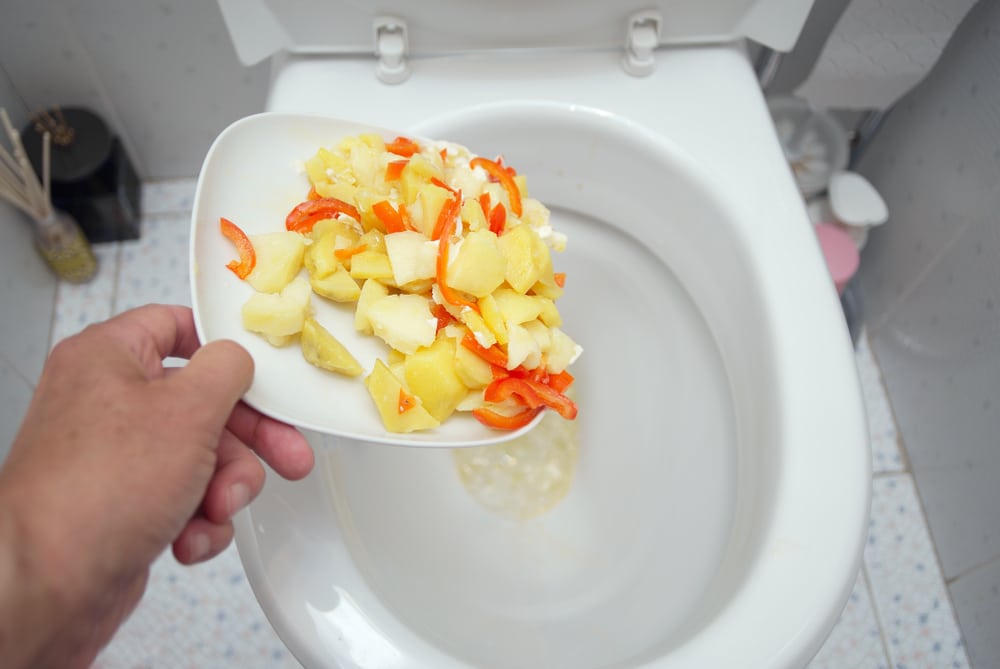This article underneath in relation to Flushing Food Down the Toilet? is truly compelling. You should take a look.

Intro
Many individuals are often faced with the issue of what to do with food waste, specifically when it involves leftovers or scraps. One common concern that develops is whether it's alright to flush food down the toilet. In this short article, we'll look into the reasons that individuals might take into consideration flushing food, the consequences of doing so, and alternative approaches for appropriate disposal.
Reasons why individuals might take into consideration flushing food
Lack of recognition
Some people might not understand the prospective harm caused by flushing food down the toilet. They might mistakenly believe that it's a safe technique.
Benefit
Flushing food down the commode might seem like a quick and simple remedy to throwing away unwanted scraps, specifically when there's no close-by garbage can available.
Laziness
Sometimes, people might merely choose to flush food out of large idleness, without considering the repercussions of their actions.
Consequences of flushing food down the bathroom
Ecological influence
Food waste that winds up in rivers can contribute to contamination and injury marine ecological communities. In addition, the water utilized to purge food can stress water resources.
Plumbing concerns
Purging food can result in clogged up pipelines and drains, creating pricey pipes repair services and inconveniences.
Sorts of food that must not be flushed
Coarse foods
Foods with fibrous structures such as celery or corn husks can obtain tangled in pipes and trigger blockages.
Starchy foods
Starchy foods like pasta and rice can absorb water and swell, leading to clogs in pipes.
Oils and fats
Greasy foods like bacon or food preparation oils should never be purged down the commode as they can strengthen and cause obstructions.
Proper disposal methods for food waste
Utilizing a waste disposal unit
For homes furnished with waste disposal unit, food scraps can be ground up and flushed through the pipes system. Nonetheless, not all foods appropriate for disposal in this way.
Recycling
Particular food packaging materials can be recycled, reducing waste and reducing environmental effect.
Composting
Composting is an environmentally friendly method to deal with food waste. Organic materials can be composted and used to enhance soil for gardening.
The value of appropriate waste monitoring
Minimizing environmental injury
Appropriate waste management methods, such as composting and recycling, help decrease air pollution and preserve natural deposits for future generations.
Securing plumbing systems
By staying clear of the method of flushing food down the commode, property owners can avoid pricey plumbing repair services and maintain the stability of their pipes systems.
Conclusion
To conclude, while it might be tempting to purge food down the commode for ease, it's important to recognize the potential consequences of this action. By embracing correct waste monitoring practices and throwing away food waste properly, individuals can add to healthier pipes systems and a cleaner environment for all.
FLUSH FOOD DOWN THE TOILET?
FLUSHING FOOD CAN CAUSE BLOCKED DRAINS IN YOUR HOME
All of the plumbing fixtures in your home are connected to the same sewer pipe outside of your home. This outdoor sewer pipe is responsible for transporting all the wastewater from your home to the Council sewer mains. Even small pieces of food that go down the kitchen sink can cause problems for your sewer. It should therefore be obvious that flushing larger bits of food, such as meat, risks a clog in either the toilet itself or the sewer pipes. Flushing greasy food is even more problematic because oil coagulates when it cools, coating the interior lining of your pipes.
THE TOILET IS NOT A BIN
Food isn’t the only thing that people shouldn’t be flushing down the toilet. People use the toilet to dispose of all kinds of things such as tampons, makeup wipes, dental floss, kitty litter and even underwear. Water goes to great lengths to educate residents about the high costs and stress placed on wastewater treatment systems simply from people flushing the wrong stuff down the toilet. It costs taxpayers millions of dollars each year, and homeowners thousands in blocked drain repairs.
FLUSHING FOOD IS A WASTE OF WATER
Flushing food is a waste of our most precious resource - water. In June this year Level 1 water restrictions were introduced to protect water supply from drought conditions. Much of New South Wales continues to be affected by prolonged drought with recent figures revealing up to 97 per cent of the state remains in drought. Depending on whether you have a single or dual flush toilet, every single flush uses between five and 11 litres of water. In the current climate this is a huge amount of water to be wasting on flushing food that should be placed in the bin (or better yet, the compost).
https://www.jabplumbingsolutions.com.au/blog/can-you-flush-food-down-the-toilet

As an enthusiastic person who reads about What Can Happen If You Flush Food Down the Toilet?, I think sharing that excerpt was really helpful. Enjoyed our article? Please share it. Help somebody else discover it. Many thanks for your time. Please check up our blog back soon.
Click Here